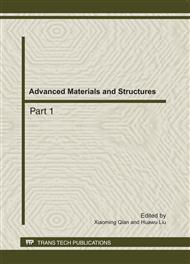p.704
p.708
p.713
p.717
p.721
p.728
p.732
p.736
p.743
Effects of Monoclinic ZrO2 with Different Particle Size on Properties of Zirconia Refractories
Abstract:
The zirconia refractories were prepared using partially stabilized zirconia grain and monoclinic zirconia powder as the matrix, partially stabilized zirconia particles as the aggregate, and phenolic resin as the binder, and four sizes of monoclinic zirconia powder (D50=1 μm, 3 μm, 6 μm, 10 μm) were used as additives. Besides, an improved specimen was prepared using a specific monoclinic zirconia powder as additive. Properties of specimens with different sizes of m-ZrO2 powders were researched, including apparent porosity, bulk density, cold modulus of rupture, pore size distribution. Moreover, phase composition and microstructure were analyzed. The results show that, particle size of monoclinic zirconia powders greatly affect the sintering of materials. The specimens with finer m-ZrO2 powder have lower porosity, higher bulk density and cold modulus of rupture, and the grain boundaries of zirconia particles were fuzzy, showing that the matrix of the specimens were almost sintered completely. While in specimens using coarser m-ZrO2 powder, the grain boundaries of zirconia particles were clear, showing that the matrix of the specimens were not sintered completely.. Though finer monoclinic zirconia powder promoted the sintering of materials in the test, it had negative impact on the microporus structure, for large pores were observed in the specimen with fine m-ZrO2 powder. Finally, the improved specimen with promoted sintering and optimized microstructure as well as phase composition was obtained by using specific monoclinic zirconia powder as additive.
Info:
Periodical:
Pages:
721-727
Citation:
Online since:
September 2011
Authors:
Price:
Сopyright:
© 2011 Trans Tech Publications Ltd. All Rights Reserved
Share:
Citation:


